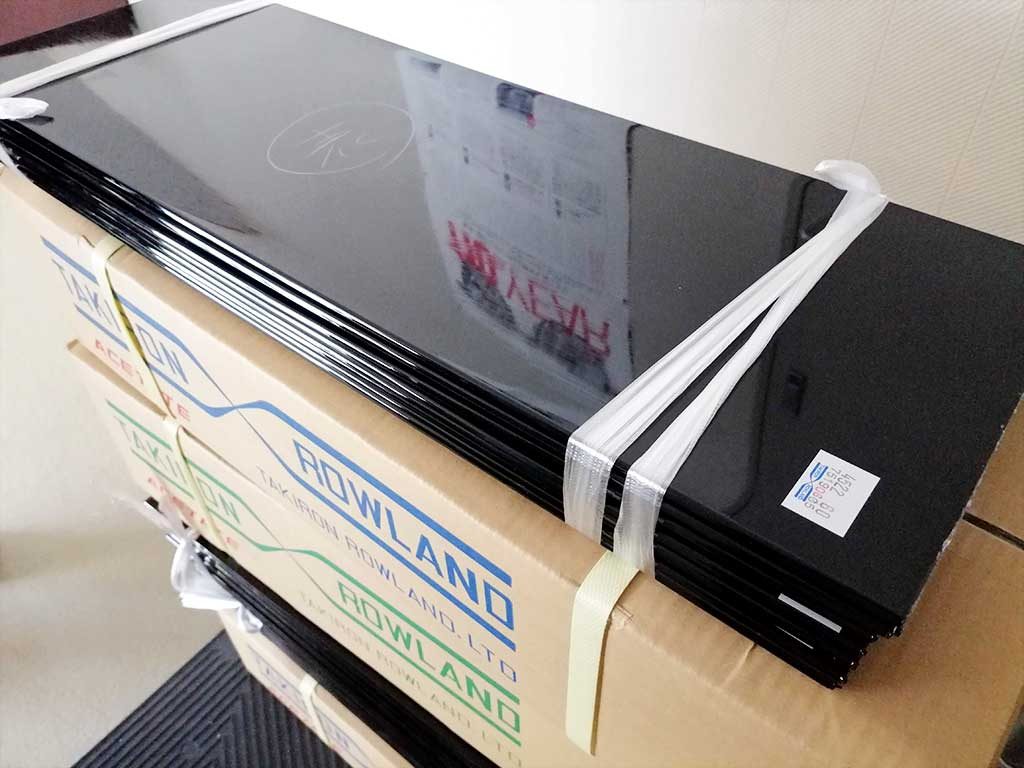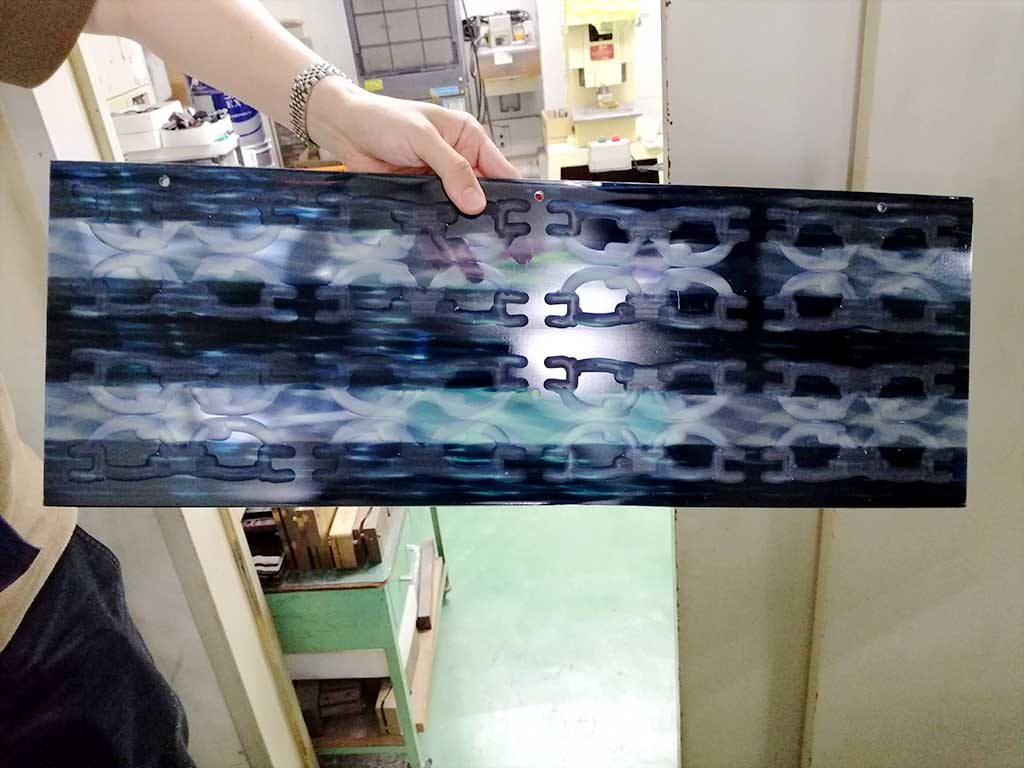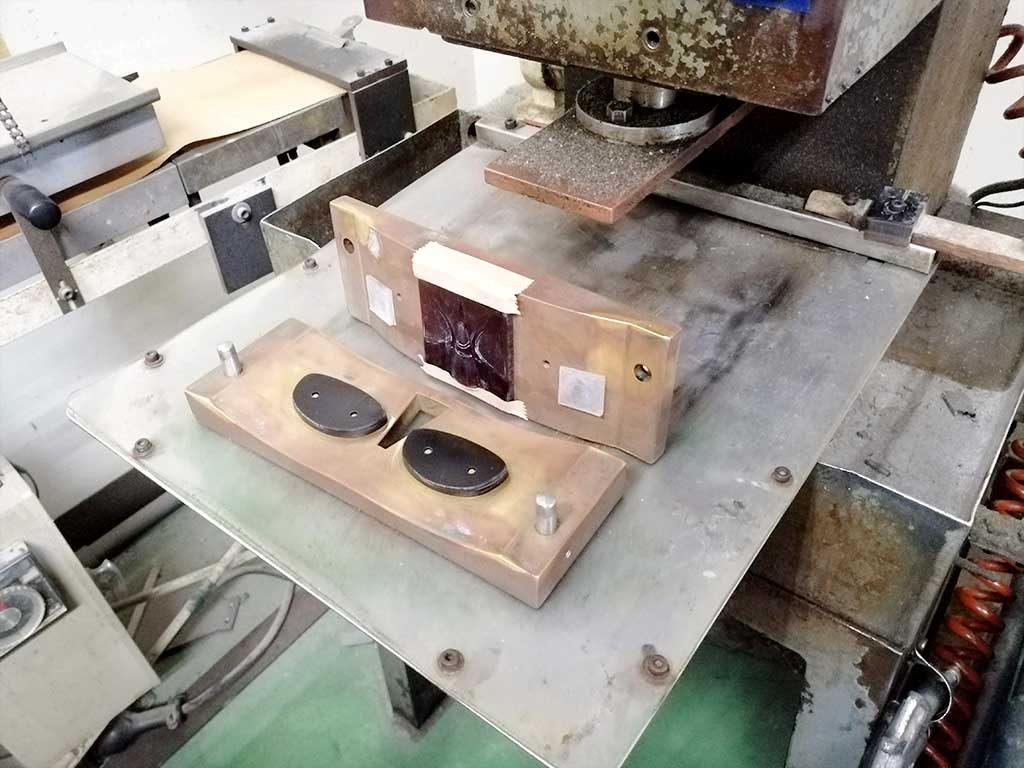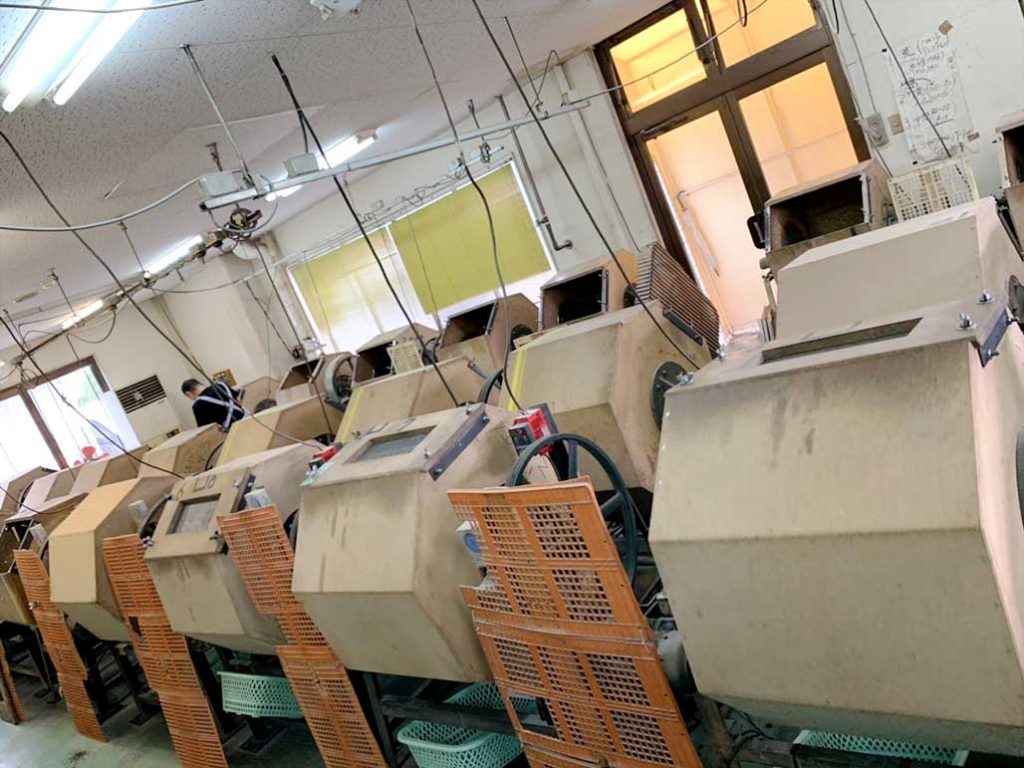044-722-4262
3-600 Kosugi-cho, Nakahara-ku, Kawasaki-shi, Kanagawa
Kosugi 3rd Avenue 1F
Business hours: 10:00-19:00
New & Restocked Frames
2019.08.05
Sabae Factory Tour Vol. 4
This is the fourth report on the Sabae factory tour.
In this issue, we would like to talk about the manufacturing site of plastic frames. The company we visited is Sasaki Celluloid Kogyosho. The company manufactures mainly acetate frames at the request of domestic and foreign brands.
This company makes prototypes based on the requests and illustrations from the brands so that the glasses can be made into actual glasses, consults with the designers to create beautiful glasses, and then starts mass production when the prototypes are satisfactory.
Sasaki Celluloid Kogyo's work process
This is the pre-processed state of acetate called "fabric.
This board is then shaved, bent, and polished to form a single pair of glasses.

Now, what makes this factory unique is that it uses a European-style "rear R" instead of the "front R," which is the norm in Sabae.
You may wonder what I am talking about when you hear all this. The front part of a pair of glasses may be somewhat curved, but the first curving and then processing the other parts is the "front R" and the second curving after most of the work is done is the "back R".
Both have their advantages and disadvantages, but I had only seen the former R way, so it was very new to me.
Here is the frame being formed on the machining center.
It will be cut to match the pattern of the frame. This is the kind of fabric that is used for frames that change color in a gradation from top to bottom.


This is the machine that adds curvature to the shaved frame.
The acetate is bent a little at a time while being heated.


And the craftsmanship is in the installation of the nose pads.
It may look very easy to do, but in fact, it is a technique that requires a lot of practice to become good at it, because it must be symmetrical, and the height and angle must be the same.
This is the joint between the temple and the front called "GATEGUCHI". This is also a world where angles and cutting methods are important, and although it looks easy, it is very difficult to do.
This is a gala container that was also in a metal frame.
Most plastic frames need to be shiny, so the frames are placed in a machine with polishing agents and run for more than 24 hours in some cases.


The frames are then buffed and carefully polished one by one.
The professionalism of the professionals is unparalleled. In no time at all, they are shining.


There are many more processes involved, but each pair of glasses is made in this way, one by one, with a lot of time and effort.
Each task is very detailed. In fact, it is said that the more meticulous a task requires, the more likely it is to be done by women.


